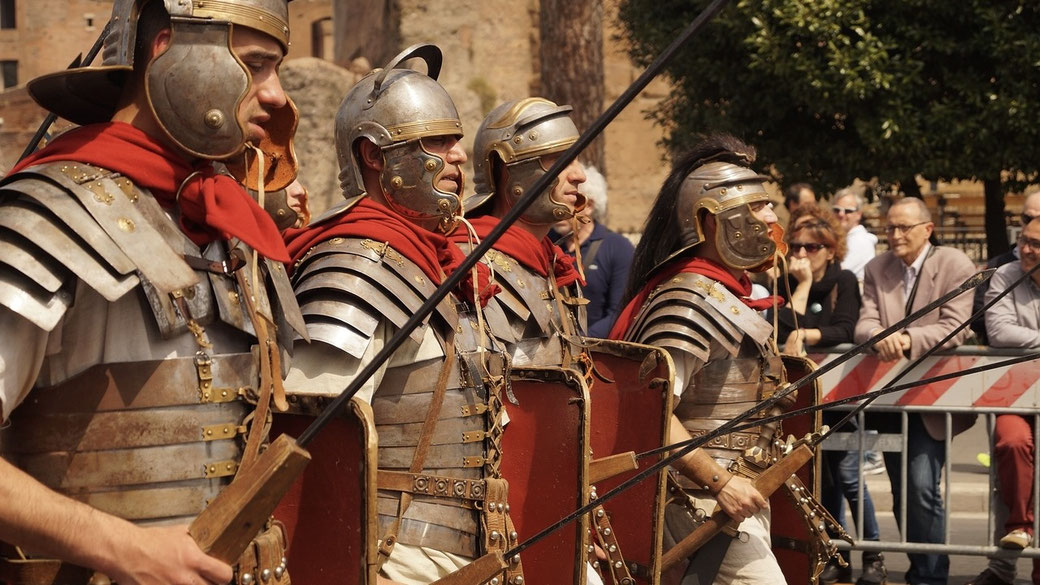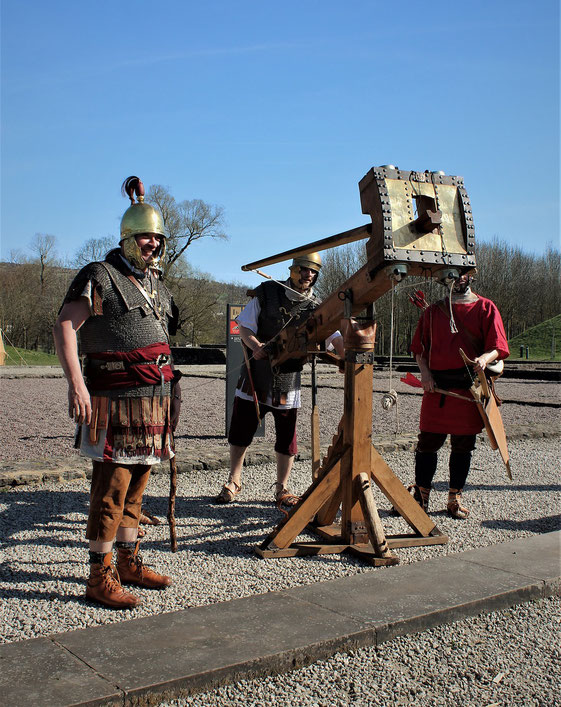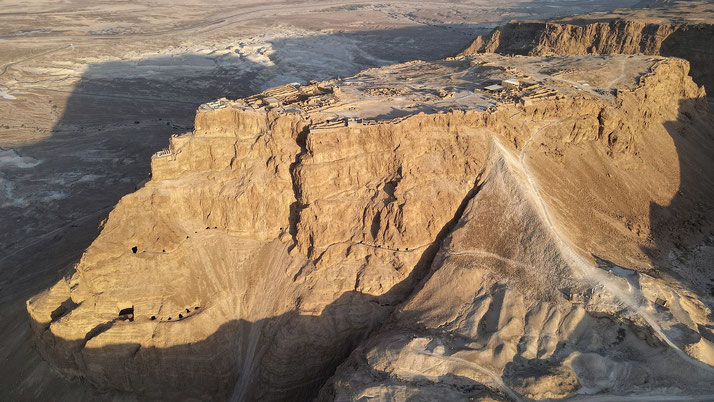How did the Romans besiege and capture cities?

Siege warfare has been a staple of military strategy for millennia, and no one did it better than the ancient Romans. From the epic sieges of Carthage and Alesia to the tragic tale of Masada, the Romans left an indelible mark on the history of siege warfare.
Their innovative tactics, superior engineering, and relentless determination made them masters of the art of siege warfare, allowing them to conquer even the most formidable of fortresses.
Below, we will delve into the fascinating world of Roman siege warfare, exploring the weapons, tactics, and strategies that made them so successful, and examining some of the most epic sieges in ancient history.
What is a 'siege'?
A siege is a military tactic used to isolate and conquer a fortified location, such as a city, castle, or stronghold.
The siege involves surrounding the location with an army and cutting off all supplies and reinforcements to the defenders, preventing them from receiving food, water, or other essential resources.
The goal of a siege is to weaken the defenders and force them to surrender or to create an opportunity for the attackers to breach the fortifications and gain entry to the location.
Siege warfare can involve a variety of tactics, including the use of siege engines, such as catapults and battering rams, and the digging of tunnels under walls to undermine them.
Sieges can last for a few weeks to several years, and they are often long and difficult, requiring a great deal of patience, perseverance, and resources on the part of the attackers.
Siege warfare has been used throughout history, from ancient times to the present day, and it remains a viable tactic for militaries today.
Roman siege weapons
Siege weapons were used by the Romans to breach city walls, destroy fortifications, and generally create chaos and confusion among the enemy.
Some of the most common siege weapons used by the Romans included battering rams, siege towers, ballistae, and catapults.
Battering ram
The battering ram was a common siege weapon used by the Romans.
Essentially a large, heavy log with a metal tip, the battering ram was used to repeatedly strike and weaken a city's walls until they finally crumbled.
The ram was often carried by a group of soldiers who were protected by a movable wooden shelter called a testudo.
Siege tower
Another common siege weapon used by the Romans was the siege tower.
These were essentially tall, wheeled structures that could be rolled up to a city's walls.
Once in position, soldiers inside the tower could climb to the top and use it as a platform to launch attacks on the enemy.
Onager
The Onager was a type of catapult that used a large arm with a sling at one end to launch projectiles at enemy fortifications.
It was named after the wild donkey or Onager, which was known for its powerful kick.
The Onager could launch a variety of projectiles including large rocks, balls of burning pitch, and even dead animals.
It was operated by a team of soldiers who would pull back on the arm, loading the sling with the projectile before releasing it to launch towards the enemy.

Scorpio
The Scorpio was a smaller, more mobile weapon, similar to a large crossbow.
It was used to fire short, light arrows called bolts with great accuracy and speed.
It was operated by one or two soldiers, who would use a crank to pull back the bowstring and load the bolt.
The Scorpio could be used in both offensive and defensive situations, and was particularly effective against infantry or cavalry.

Roman siege strategy
A typical approach to besieging a city by the Romans involved a combination of military tactics, engineering, and perseverance.
Their approach to besieging a city was a careful and methodical process.
Step 1: Surround and isolate
The first step in a Roman siege was usually to surround the city with a wall or series of fortifications, cutting off all supplies and reinforcements to the defenders.
This allowed the Romans to isolate the city and deprive the defenders of food, water, and other essentials.
The Romans would also establish camps around the city to house their soldiers and siege engines.
Step 2: Build siege engines
The next step was to begin constructing siege weapons and other equipment needed for the assault.
This included battering rams, catapults, and ballistae, as well as ramps and siege towers to breach the walls of the city.
Step 3: Assault the walls
The Romans would then launch a series of assaults on the city, using their siege engines to weaken the walls and gates, and their soldiers to attack and occupy key points in the defenses.
The Romans often used tactics such as surprise attacks, night raids, and diversionary assaults to confuse and weaken the defenders.
During the siege, the Romans would also engage in a variety of other activities to wear down the defenders, such as digging tunnels under the walls to undermine them, poisoning water sources, and setting fires to buildings inside the city.
Step 4: Psychological warfare
The Romans also sought to demoralize and intimidate the defenders. They would often launch surprise attacks, conduct night raids, and set fires to buildings inside the city to create chaos and fear among the defenders.
The Romans would also employ tactics such as sending messages to the defenders warning them of their impending doom, or displaying the severed heads of their enemies on poles outside the walls, to instill fear and weaken the defenders' resolve.
The ultimate goal was to break the defenders' will to resist and convince them to surrender without the need for a prolonged and bloody battle.
Step 5: Starve them out
The Romans would often endure long and difficult sieges, lasting weeks or even months.
This required a great deal of perseverance and determination, as well as a steady supply of resources and reinforcements to keep the soldiers fed, rested, and motivated.
However, if the Roman army could maintain the siege, often the defenders would suffer starvation.
Starvation was a common tactic used by the Romans during sieges. By surrounding a city and cutting off all supplies and reinforcements, they were able to force the defenders to rely on their own dwindling resources.
This often led to starvation and malnutrition among the defenders, weakening their physical and mental capacities and making them more susceptible to surrender.

Step 6: If all else fails, use diplomacy
The Romans would often offer the defenders generous terms of surrender, promising safety, food, and even employment in the Roman army or government if they surrendered peacefully.
This was an effective strategy, as it often convinced the defenders to surrender without the need for a further fighting.
This gave the defenders a reason to surrender peacefully, as they could avoid the devastation and loss of life that would result from a prolonged siege.
Famous Roman sieges
Alesia
The Siege of Alesia took place in 52 BC during the Gallic Wars. Julius Caesar, the Roman general, had been fighting against the Gauls for years, and Alesia was the final stronghold of the Gallic forces.
Caesar ordered his army to surround the city with a massive circumvallation wall, cutting off all supplies and reinforcements to the city.
Meanwhile, he sent a smaller force under the command of Titus Labienus to intercept the Gallic reinforcements.
The siege lasted for several weeks, during which time the Romans successfully repelled several counterattacks by the Gallic forces.
Eventually, the Gallic defenders were forced to surrender, and Caesar emerged victorious.
Carthage
The Siege of Carthage took place in 146 BC during the Third Punic War.
After a long and brutal conflict, the Romans finally laid siege to the city of Carthage, which was the capital of the Carthaginian Empire.
The siege lasted for three years, during which time the Roman forces built a massive wall around the city, cutting off all supplies and reinforcements to the Carthaginians.
The Carthaginians made several attempts to break the siege, but were ultimately unsuccessful.
The Roman army used a variety of siege weapons, including catapults and battering rams, to breach the walls of the city. Once the walls were breached, the Roman soldiers entered the city and engaged in brutal hand-to-hand combat, ultimately defeating the Carthaginians and sacking the city.
The Siege of Carthage marked the end of the Carthaginian Empire and the beginning of Roman dominance in the Mediterranean world.
Masada
The Siege of Masada took place in 73 AD during the First Jewish-Roman War.
The fortress of Masada, located in modern-day Israel, was the last stronghold of a group of Jewish rebels who had been fighting against the Roman Empire.
The Romans surrounded the fortress and built a massive ramp up to the walls, which allowed them to breach the defenses of the fortress.
The Jewish rebels, numbering in the hundreds, chose to commit mass suicide rather than surrender to the Romans.
The Siege of Masada has become a symbol of Jewish resistance against foreign oppression and has had a profound impact on Israeli culture and identity.

Its use in Roman projection of power
The Romans were masters of siege warfare, and their ability to lay siege to and conquer fortified cities and strongholds was a key factor in their expansion and consolidation of power.
By using siege warfare, the Romans were able to conquer territories that were otherwise inaccessible or difficult to conquer.
This allowed them to expand their empire across Europe, Africa, and Asia, and to establish themselves as a dominant military and political force in the ancient world.
Siege warfare also played a crucial role in the projection of Roman power. By conquering and controlling key strategic locations, the Romans were able to project their power across vast distances and establish themselves as a dominant force in the Mediterranean world.
This enabled them to maintain control over their vast territories and to defend against potential threats from neighboring powers.
What do you need help with?
Download ready-to-use digital learning resources
Copyright © History Skills 2014-2025.
Contact via email
With the exception of links to external sites, some historical sources and extracts from specific publications, all content on this website is copyrighted by History Skills. This content may not be copied, republished or redistributed without written permission from the website creator. Please use the Contact page to obtain relevant permission.





